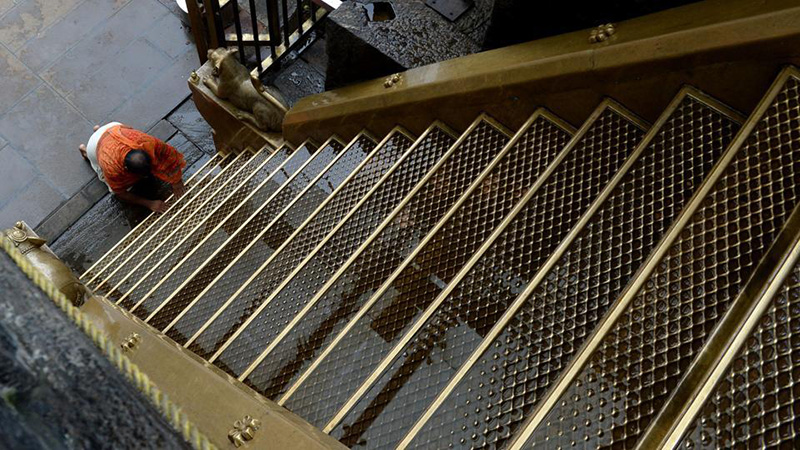The Holy Trek
The Temple and the Eighteen Steps
Nov 2014

Nowhere to our knowledge have the steps to a temple been given such great importance and significance as those to the temple of Lord Ayyappan. They are eighteen in number, representing the five Indriyas, eight Ragas, three Gunas, Vidya and Avidya. Just as we climb the eighteen steps which symbolize the eighteen elements, the soul transcends these within the body, in order to reveal its splendour which has hitherto been covered over by the veils of Maya. On transcending these eighteen elements it becomes self-effulgent, feels the eternal bliss that is God within itself, comes face to face with the Supreme, and merges in It.
The Lord sits there in his Yogasana, in the mudra indicating “Thou art That”. He sits in silence yet converses with his devotees: “Gurostu mounam vyakhyanam”.In silence he speaks eloquently with them. All those who go to Him are blessed in silence. The Lord of the Universe, He sits there to give His devotees what they desire, but before one desires one must deserve, and in order to deserve one must strive and serve the Lord. To serve Him is to do His Will. He is Chintamani for those who take refuge in Him, He is the bright eternal light in man, He it the constant friend and guide of man.
We have enumerated the important conditions of austerity to be observed for a successful pilgrimage to the Sabari Hills. There are, however, yet others of a more conventional nature. Those who wish to climb the eighteen sacred steps should, it is said, observe the austerities for a period of not less than 41 days. Generally the austerities are started on the 1st of Vrischikam (corresponding to about 16th November). The significance of this is not specifically known, but, strangely enough, it coincides with the date of the laying of the foundation of the temple. In Kerala the period of “Mandala” starts on this date and the days from then up to Makara Sankranti are considered sacred. This is a period of penance generally observed in Kerala.
The austerities are inaugurated by the wearing of a Tulasi or Rudrasha garland. This practice which is called Maladharan, betokens the pilgrim’s vow to observe the austerities faithfully.
